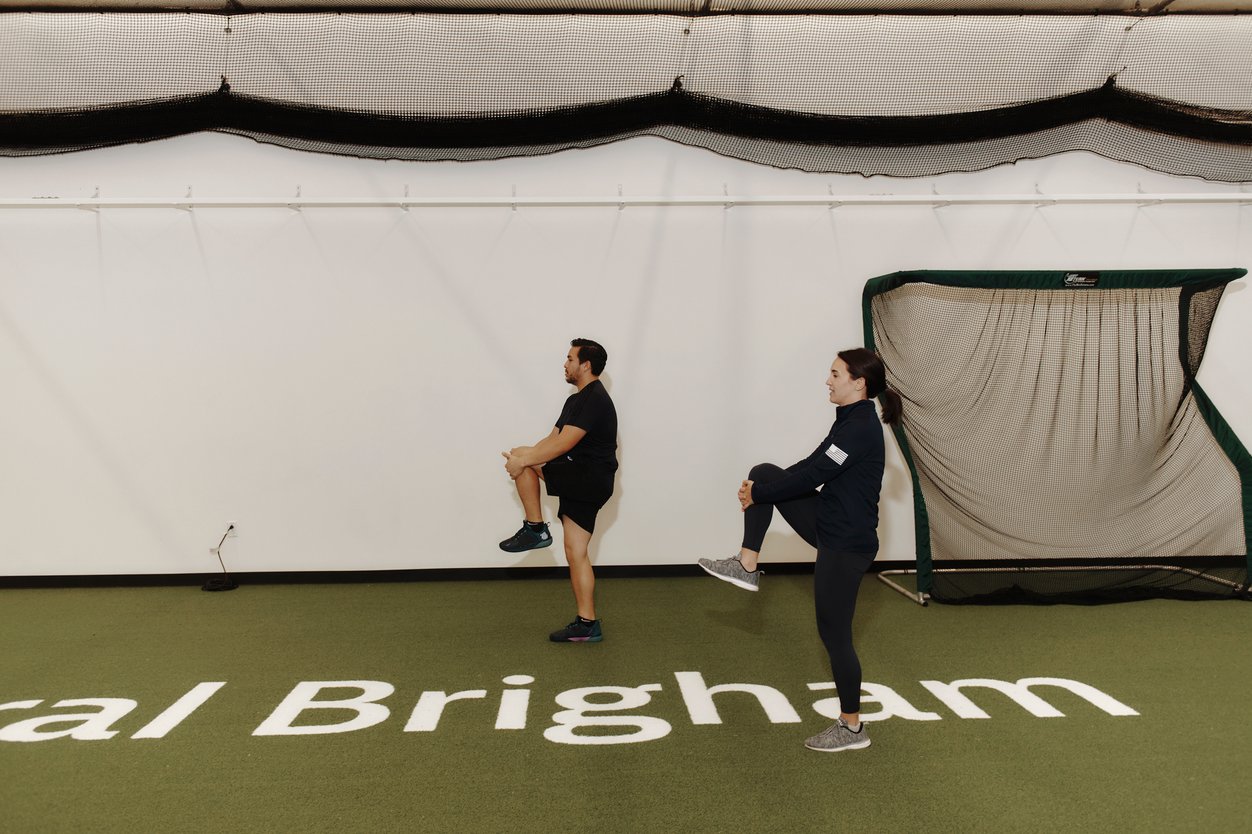closer look
Hospital offer sports performance centers for athletes seeking that extra edge
Tony Luong for STAT
Ordinary mortals sometimes aspire to become just a little more like elite athletes, whether that means hitting new highs in their chosen sports or having access to training that the pros enjoy. It turns out that the same principles of injury recovery and prevention apply to both weekend warriors and professionals, but few of us have a team of experts we can call on to analyze strengths and weaknesses, customize plans to improve, and guide us individually through the workouts.
That's where hospitals are stepping in with sports performance centers like the one Mass General Brigham opened last summer near the home stadium of the New England Patriots. There's a crucial distinction: The Center for Sports Performance and Research serves athletes, not patients, after they've been cleared medically to pursue a goal if they're post-injury. Insurance doesn't cover the cost, but that has not dampened demand. "You feel like you're getting what the Patriots next door get every day," 29-year-old pickleball athlete and entrepreneur Jodi Cullity said at the tech-rich, sports-diverse facility. I have more here.
chronic disease
Fluctuating BMI linked to cardiovascular risks
We've all heard that yo-yo dieting is bad for us, long before the new weight-loss drugs changed how we view and treat obesity. But the science hasn't been clear on what fluctuating weight means for our health, especially cardiovascular disease. Researchers set out to resolve conflicting studies by analyzing health records in the large and diverse Million Veteran Program, validated against the U.K. Biobank to increase female representation. They report in JAMA Network Open that the more variation in BMI, the greater the risk of excessive changes in blood pressure, heart rate, and blood sugar. That increase translated into more heart attacks, strokes, and cardiovascular deaths.
The results, based on more than 157,000 health records, held true after accounting for age, sex, smoking, diabetes, statin use, and other factors. Why BMI fluctuations raise cardiovascular risks isn't known, but the authors call for future research focusing on understanding what they call metabolic derangements brought about by varying BMI.
medical devices
Opinion: What device makers share with Uber
Medical devices and ride-share companies like Uber and Lyft usually don't come up in the same sentence, but Kyle Sheetz of the University of Michigan and Robert Wachter of the University of California, San Francisco invite us to consider what they have in common. In the Uber model, the company created sufficient market demand in New York City to limit inevitable pushback, they write in a STAT First Opinion. Device makers hoping to leap over barriers both regulatory and behavioral may also be tempted to act first and ask permission later.
Transcatheter aortic valve repair rapidly changed practice, but evidence of benefit came years after wide adoption. Robotic surgery and proton beam therapy are two other examples. "The medical community can learn a lot from cases in which device makers successfully used an Uber-like strategy," they say, "yet a system that facilitates widespread use of, and payment for, a new device or practice in the absence of supportive evidence can also lead to harm and waste." Read more about finding "a middle ground."


No comments